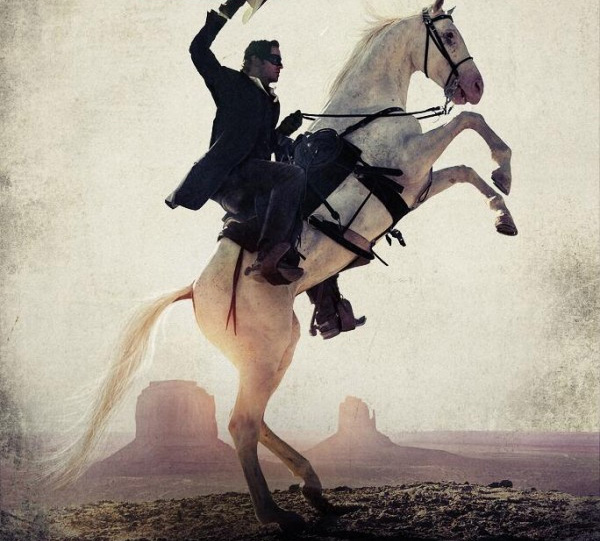Friday, July 19, 2013
Movie Review: The Lone Ranger
What follows are my thoughts after seeing Disney's The Lone Ranger last night. Spoilers to follow.
Disney has tried to recreate a classic with their latest film, and, in my opinion, have failed miserably. Although I have only seen one episode of the classic TV series (which ran from 1949-1957 with 221 episodes), I can tell you that the similarities go only as far as the title and main characters.
One of the things that really put me off about this movie was the amount of violence that was in it. I knew going into the film that it was going to be a little darker than, say, Pirates of the Caribbean, but I was not expecting this amount of violence and gore from a Disney film. For instance, about 30 minutes into the film, the Dan Reid, one of the Rangers for the town of Colby, Texas, gets shot off his horse. They could have ended the scene right then and there, and the audience would have known that he was dead, as many classic Western films have done, but again, Bruckheimer and Verbinski didn't stop there. The antagonist, Butch Cavendish, proceeds to cut his heart out and eat it. He ate his heart. WTF Disney?! Judging from a few other moments in the film (Red's ivory leg), Butch got his name from butchering people and eating them. I digress.
Another thing. I totally understand John Reid's moral code of not killing anybody, and bringing them to justice in a court of law. It's one of those themes that the classic Western The Man Who Shot Liberty Valance is all about. But Rance Stoddard never donned a mask to fight his enemies. The Lone Ranger did. I'm not arguing for a double-standard of morality, I'm just saying that you live in the Wild West. There are no laws. There is no authority. The only justice there is is the 6-shooter on your side. USE IT.
The cinematography on the film was rather odd, actually. Some of the framing, particularly in the beginning of the film, frames some people who are talking so that their head is cut off. I'm not sure if this is because the filmmakers wanted us to feel uneasy about this particular character, or if they just got lazy, but either way, it worked. The film was shot in Colorado, southern Utah, New Mexico, and California. I loved the expansive landscape shots in the d. One of them in particular is during the end credit sequence, where it shows Tonto and The Lone Ranger riding off to bring justice to the wild west. Cinematographer Bojan Bazelli used a mixture of film and digital to capture the beautiful scenery. The daytime exteriors were shot on Kodak VISION3 50D 5203 35mm film, and the night time exteriors and interiors were shot on the Arri Alexa Studio camera. I actually liked how the film looked and felt in terms of it's grittiness, because the wild west was a gritty and dirty place.
The music was one of the few things in the film that I actually enjoyed. Once the film gets it's legs (at about 2 hours into the film), we finally hear the classic William Tell's Overture, as The Lone Ranger starts to do his thing. I wish there was more of that in this film.
One of my beefs with the film are the many times that Tonto somehow miraculously appears in the right place at the right time, or how he got out of jail, etc... Instead of showing us some tricky way of how he did it (ala Jack Sparrow style), the filmmakers cheapened the experience by cutting away to the older Tonto telling the story to the young boy at the fair, and having the boy ask the question that was on the audience's mind, only to be met with a cross-eyed gaze from the aging Tonto, who just proceeds with the story. Also, how did they know that the dynamite and the kerosene was in the vault at the bank? There were many other plot holes, and they make up the whole of the movie.
Oh, and Tonto is really Jack Sparrow in disguise.
I feel like this film was trying to be something that it wasn't. It was trying to be fun, but by the climax of the film, you're worn out and just want to leave anyway. The climax (the only real fun part of the show), reminded me of Buster Keaton's 1926 classic film The General. Except that everything that you see in The General is honest-to-goodness real. There were no bad CGI buffalos or disorienting camera moves, or cannaballistic rabbits in The General, either. But I definitely had more fun with that film. Oh, and did I mention that it's a black and white silent film?
I give The Lone Ranger a 4/10, and that's being generous.
Subscribe to:
Comments (Atom)


